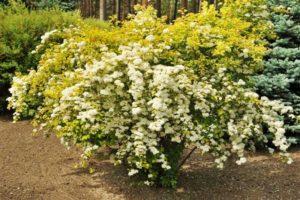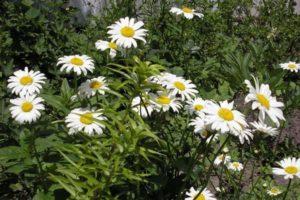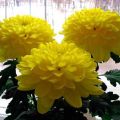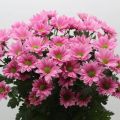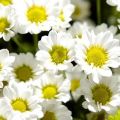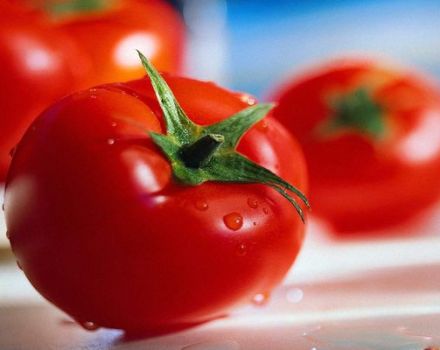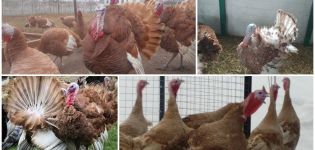Description of the 22 best varieties of Indian chrysanthemum, outdoor cultivation
Large garden chrysanthemum, or otherwise the Indian gold flower, belongs to the elite species. The plant has a wide distribution area - from Europe to the Middle East and the Caucasus. Once planted, the bush will delight the owners with long flowering. Chrysanthemums of this variety are 90 to 150 centimeters in height. Petals of a characteristic, bright yellow color. The flowering period is long - from August to December.
Description and features
The genus of Indian chrysanthemums is extensive, amounting to more than ten thousand copies. The plant is not easy to grow on a personal plot, but those who succeed will be rewarded in full. Chrysanthemum flowers are bright, with large petals. Stems without branching, with cut leaves. Basket-shaped inflorescence, mostly yellow in color. The petals are arranged in several rows.
After flowering is complete, the chrysanthemum hibernates safely in the fall, and sprouts appear again in the spring. The plant is popular among gardeners, used in landscape design, to decorate flower beds and plots. Can be cultivated in an apartment.
Popular varieties
Among the variety of species of Indian chrysanthemums, there are both popular, leaders and outsiders. This positioning is due to various reasons - the convenience of growing, the availability of seed or the external characteristics of the flowers. In addition, the popularity is due to the binding to the probable regions of growing varieties of chrysanthemums.
Aurora
The variety is characterized by flat large inflorescences, the petals are orange in color. The diameter of a chrysanthemum flower is about 100 millimeters. The growing season covers almost the entire autumn - from September to October. Aurora's stem height is average - up to 1 meter.
Anastasia
The Anastasia variety pleases gardeners with a variety of colors - white, pink, green, lemon, even lilac. It remains to add to this description the gigantic size of the inflorescence - up to 20 centimeters. The disadvantage of chrysanthemum is the fragility of the basket.
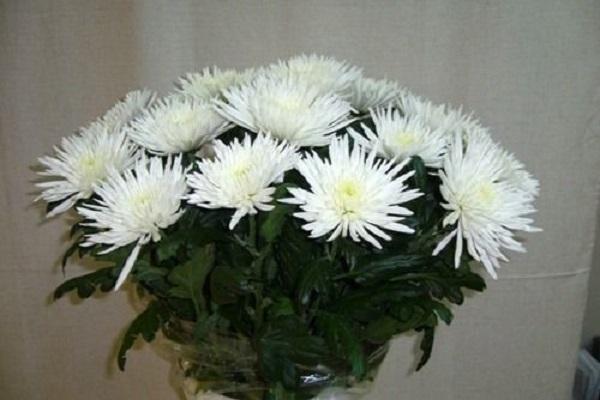
Artist
This species is recommended for indoor breeding, is compact and harmonious development. It blooms for a long time, the petals are originally painted white or pink, there are 2 stripes on each petal.
Vimini
Vimini is compared to a small sun: a bush up to 30 centimeters high, the petals are multi-colored, brightly colored. The color of chrysanthemum petals smoothly goes from brown (in the center) to orange, sometimes lemon or yellow.
Gazelle
A chrysanthemum variety with a strong stem, suitable for creating compositions or bouquets. The main distinguishing feature of the Gazelle is its bright white flowers, almost 20 centimeters in size.
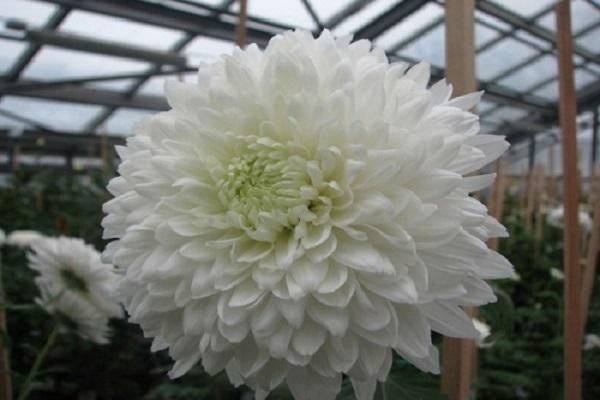
Valentina Tereshkova
The variety, dedicated to the first female astronaut, will decorate a flowerbed with its presence, looks great in a single planting. The inflorescences are large, painted in dark shades of crimson. Below the chrysanthemum petals are slightly lighter than above.
Aviator
The Aviator variety is known recently, refers to semi-double. Bred in the Netherlands. The inflorescences cannot be called large, they are up to 8 centimeters. Petals are four-row, straight. Chrysanthemum easily tolerates transportation, especially when cut. The bush is shrouded in bright emerald leaves, it is classified as upright.
Alomos
A special Dutch type of chrysanthemum, suitable for cutting and transportation. The inflorescence, at first glance, is uncomplicated, resembles a chamomile. Basket up to 7 centimeters in diameter. The petals are wide, painted in lilac or burgundy tones. At the end, they turn into white. The height of the bush is average - up to 700 millimeters.
Barolo
Chrysanthemum of Italian selection. The height of the bush is about 60 centimeters, the diameter of the inflorescence is up to 7. The petals are regular, bright red in color, with a uniform color distribution over the area. The center of the basket is yellow, with light greens. Leaves with a smooth surface, feathery, herbaceous. Cut flowers can last up to 20 days in a vase.
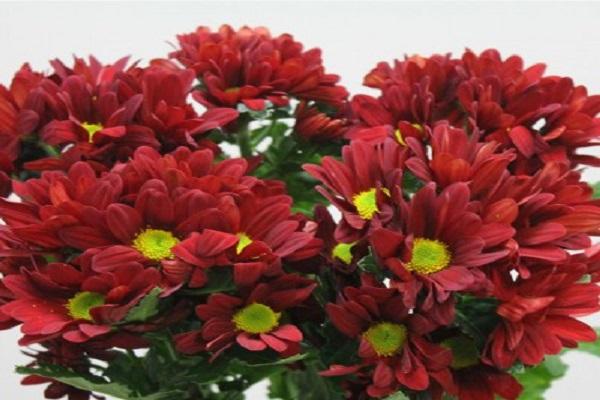
Bartoli
The Dutch type Bartoli forms orange double inflorescences. The basket size is from 5 to 7 centimeters. The bush is upright, about 700 millimeters high, almost without branching. The leaves are bright green, feathery. Cut chrysanthemum flowers stand for a long time, are transported.
Barca
A variety with large double-type flowers (up to 10 centimeters in diameter). Color - dark purple or dark purple shades. A chrysanthemum bush of medium height - up to 700 millimeters.
Glossy
Shrub hybrid of Dutch selection. The size of the basket is small, up to 7 centimeters, highlighted by white-lilac petals. Outwardly it resembles a chamomile, in the center is a green chrysanthemum. Cut flowers remain unchanged for up to 20 days, emit a light tart aroma.
Grandeza
The Grandeza species is miniature in size, suitable for growing in an apartment, in a pot. The petals are semi-double, multi-row, mixed colors. The bushes are small, compact, up to 40 centimeters in height. The size of the chrysanthemum inflorescence is about 7 centimeters.
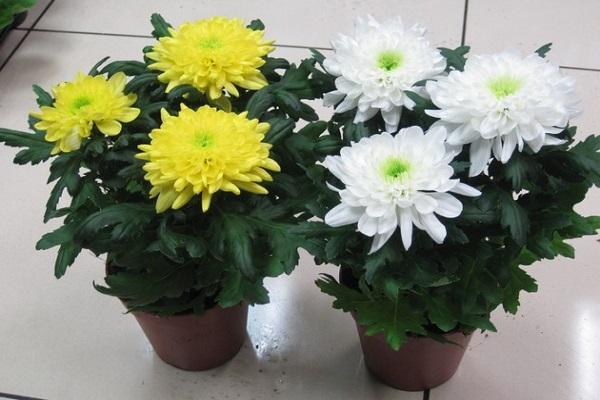
Dante
The Dante variety is distinguished by delicate terry lilac inflorescences, up to 7 centimeters in diameter. The leaves on the bush are brightly colored, green. After cutting from a bush, chrysanthemum flowers are stored for a long time, they are used to make bouquets.
Carnival
The species belongs to early growing, on a bush 40-60 centimeters high, dotted with medium-sized (7-centimeter) inflorescences, beautiful multi-colored "daisies" bloom. The range of colors is from pink to purple. Below the petals are white.
Robineau
The flowers are unusually colored: there is a mixture of yellow and burgundy, pink or red and white. The petals of the chrysanthemum are slightly curled at the base, resembling chamomile in terms of growth. Bushes of medium height.
Red Start
In upright bushes of medium height (up to 70 centimeters), originally from the Netherlands, velvet in structure, purple baskets develop.The diameter of the inflorescence is up to 7 centimeters. The foliage is medium density, bright green. Plants are grown for cutting.
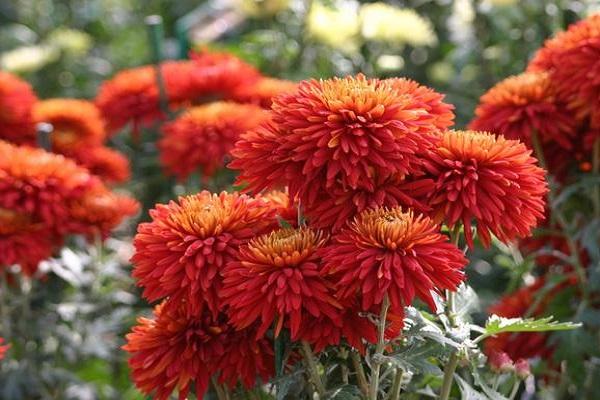
Royce Lovely
Royce Lovely has bright pinkish-lilac double baskets, with petals slightly dark in the center. The stem is straight, covered with deep green leaves. Cut chrysanthemums are not afraid of transportation, they are stored for a long time in bouquets.
Fanfare mix of colors
The bushes of this variety are of medium height, with semi-double inflorescences. Plants can be cultivated in an open place, in an apartment. The size of the baskets is up to 6 centimeters, with the height of the bushes - up to 60. The petals are colored white, pink, red, yellow or orange.
Fianna
Fianna is distinguished by a tart herbal aroma, petals of a greenish tint. Bushes - up to 70 centimeters, inflorescences are small, about 8 centimeters in diameter. Leaves are separate, pinnate. Chrysanthemum is grown for cutting flowers.
Jaguar Purple
The Jaguar Purple variety does not differ in its gigantic size, it allows the cultivation of baskets up to 10 centimeters. The average size of the inflorescences is 6-7 centimeters. Straight bush with slight branching. The color of the petals is bright purple.
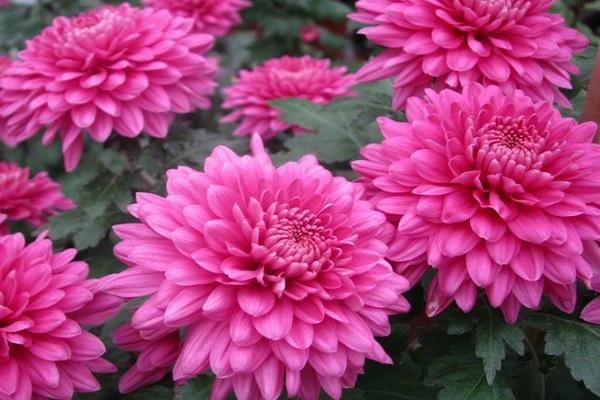
Indicum
This is the general name for all varieties of Indian chrysanthemums. Considering that the genus is numerous, rich in varieties and hybrids, among the variety of forms, colors, you can find both indoor and outdoor, with large baskets, plants.
Landing
Experienced gardeners recommend planting flowers in rainy weather or cloudy, not sunny days. If this condition cannot be met, then the procedure is chosen early morning or late evening.
Pre-dug holes up to 40 centimeters deep are abundantly filled with settled water. Then a drainage, a soil conglomerate made up of soil and vermicompost mixture (20 to 1), is laid on the bottom. The seedling (stalk) is set vertically, sometimes fixed on an additional support (tall species).
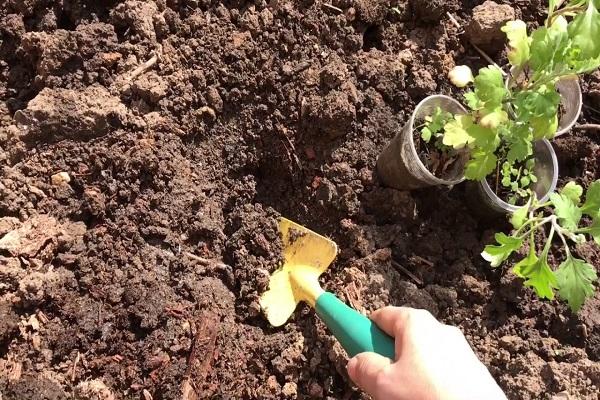
Seat selection
The genus of chrysanthemums refers to sun-loving plants, the shadow for them is evil. The same applies to moisture. It is advisable to plant bushes on a hill. Since the root system is shallow, the soil cannot be allowed to dry out.
Soil requirements
Soil with sufficient air and moisture permeability is considered optimal for chrysanthemums. The content of minerals necessary for the plant will also not interfere. Poor, overly dense soils are fertilized with peat, humus or compost. The introduction of a draining substrate, coarse sand is allowed. The acid composition requirements are as follows: neutral or weak reaction.
Timing
It is best to plant flowers in spring when warm, dry weather sets in without night frosts. May is suitable for this, you can shift the planting date to early June. It was not possible to plant the chrysanthemum in the spring, this is done in the fall, until about September 15th. This period is important, because then frost on the ground begins.
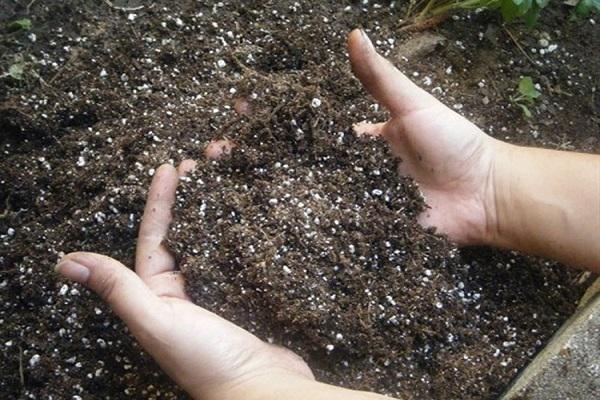
If this condition cannot be met, then the seedlings are rooted in pots by performing low pruning. Next, the container with the flower is removed to a warm, dark place. During the winter season, the soil is kept moist, so the seedling will have a better chance of gaining strength and growing.
Preparation of planting material
Since chrysanthemum does not inherit the characteristics of the variety when propagated by seeds, the following are used among the most common planting methods:
- Cuttings.
- Saplings.
- By dividing the bush.
Of course, healthy, strong plants without traces of diseases or pests are used as planting material. When grafting, shoots are cut into pieces of no more than 20 centimeters. Rooting occurs approximately 30 days after planting the cuttings. It is produced in boxes filled with soil mixture (part of the earth, 2 parts of sand and part of humus). In the spring, the hardened seedlings are transferred to open areas.
When grown from seeds, chrysanthemum will bloom for 2 years, not earlier.
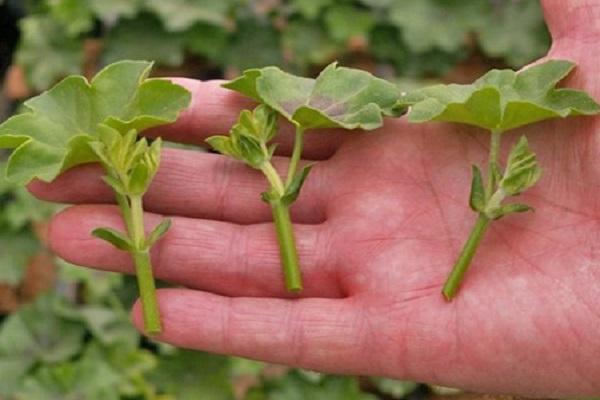
Open ground planting scheme
Cuttings, immediately planted in open ground, are placed one from another at a distance of up to half a meter. Close proximity will prevent the seedlings from developing harmoniously, growing and getting enough minerals from the soil. It is necessary to provide support, this is especially important for tall varieties. The plantings are covered with foil to provide favorable conditions for the seedlings.
Care
Regardless of the chosen growing method, the future queen of the flower garden needs to provide decent conditions, daily care and attention. This is regular, but not over-watering, fertilizing, pruning, and replanting. In addition, the growth of the chrysanthemum bush is influenced by the ratio of temperature and humidity, the composition of the soil. To form a harmonious shape, to ensure sustainable flowering, gardeners use pinching.
Watering
Chrysanthemum needs a constant humidity of 75%. Before flowering, this figure can be reduced to 65-60%. Therefore, watering should be regular, but not excessive. The optimal frequency is up to 2 times a week. Flooded plants tend to rot.
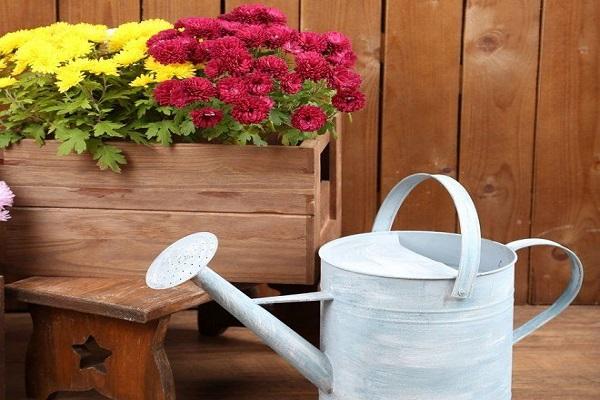
Top dressing
Minerals for Indian gold blossom are an important addition to the diet. The first phase of feeding includes fertilizing before planting, organic matter (humus) is suitable for this. The further procedure is divided into several interrelated stages:
- Foliage growth. At this time, the plant needs nitrogen and its compounds (the use of mineral complexes).
- Formation of inflorescences. Chrysanthemum needs phosphorus and potassium.
Do not forget that exceeding the concentration of fertilizers in the soil will lead to oppression of flowering. Therefore, before use, it is imperative to study in detail the recommendations for the preparation and introduction of solutions of mineral complexes.
Pruning
Pruning is started when the flowering of chrysanthemums is complete. Traditionally, the top of the plant is removed completely in order to later remove the rhizome from the ground along with the lump. The rest must be transferred to a cool, dark place (cellar, basement). There the plant will be stored until spring, it will have to be moistened occasionally.
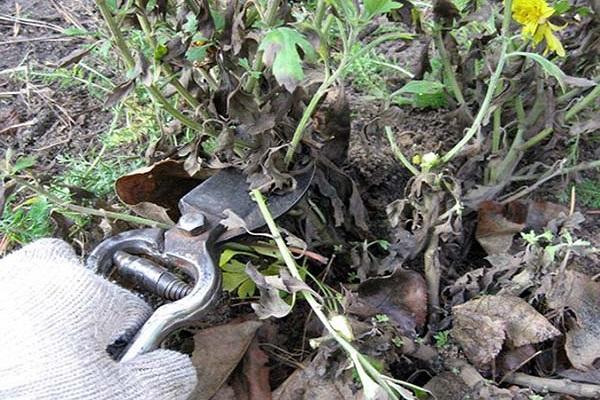
Transfer
Conventionally, a transplant can be considered the annual digging of a chrysanthemum in the fall, since in the spring it will be planted in a new place (or an old one, but again). It is recommended to periodically move the plant around the flower bed to avoid soil depletion. When transplanting, they try to carefully remove the earthen lump so as not to damage the roots located close to the surface. After planting, the plant is immediately watered, and also fertilized.
Wintering
There are 2 options for wintering: in the ground or in a pot. In the first case, the chrysanthemum is cut and covered to protect it from the cold. In the second, they are transferred to the basement for the winter.
Diseases and pests
Unfortunately, the plant is attacked by garden pests, and can also become the target of diseases and viruses.
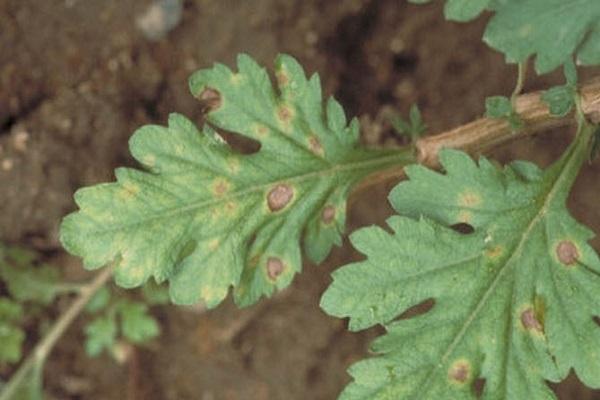
Chrysanthemum nematode
A worm, the characteristic sign of which is the appearance of rapidly darkening pale yellow spots. The best method of control is to carefully remove weed residues and foliage in the fall, in which nematodes may be hiding.
Spider mite
Ticks love chrysanthemum juice, gradually leading the plant to exhaustion. Their presence is indicated by whitish threads and drying of leaves. The easiest way to get rid of the pest is to spray the flower with water.
Aphid
Small bugs multiply quickly and can destroy large plantations of horticultural crops in a short time. To eliminate the threat, folk methods, chemistry, and loosening of plantings are used.
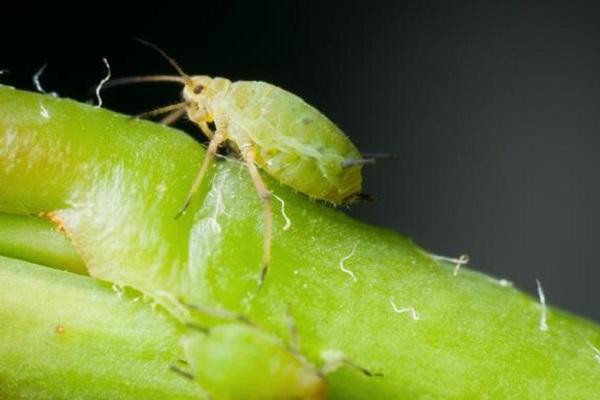
Powdery mildew
Waterlogging of plants leads to the development of powdery mildew. The best prevention is adherence to the planting scheme (at least 40 centimeters between adjacent bushes), pinching, ensuring optimal moisture.
Growing for bouquets
Chrysanthemums are beautiful in bouquets and compositions. For this, there are special varieties designed for cutting and long-term storage.
Growing potted plants
Miniature species of Indian chrysanthemums are extremely attractive in pots. It is convenient to grow them in an apartment, exposing them to a balcony or windowsill. The seeds are easy to buy in stores, order online.
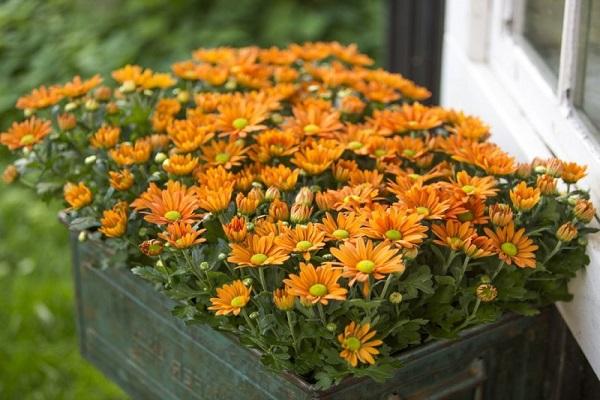
Features of home care
Home breeding of chrysanthemums will require providing the plant's needs for light, warmth, moisture and timely fertilization.
Propagation by cuttings
Propagation by cuttings is a common way of breeding chrysanthemums. To do this, choose healthy plants, cutting them into segments of 15-20 centimeters. It is important to choose the right composition of the soil mixture, not forgetting to add fertilizer to it.
Use in landscape design
Plants are used to create spatial compositions, decorate plots and flower beds. The advantage of chrysanthemums is that they are good both in a single design and in landscape design. Bright, distinctive, multi-colored "suns" are surprisingly good in the garden.
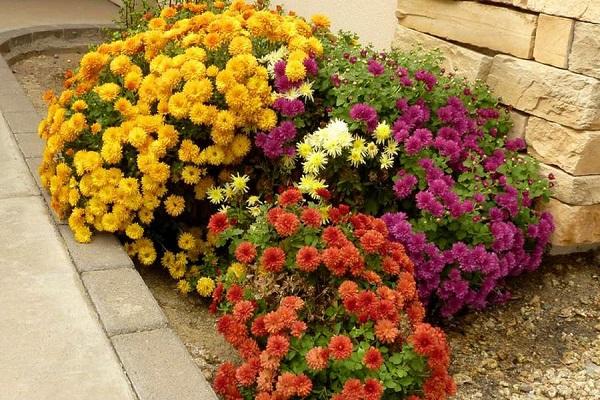
Useful properties for pharmacology
The stems and inflorescences contain camphor, glycosides, vitamin A, essential oils. Therefore, indoor chrysanthemums are useful for air purification. They are recommended to be placed in children's rooms, bedrooms. Infusions of the plant are useful at high temperatures, to stimulate appetite, help with migraines.
